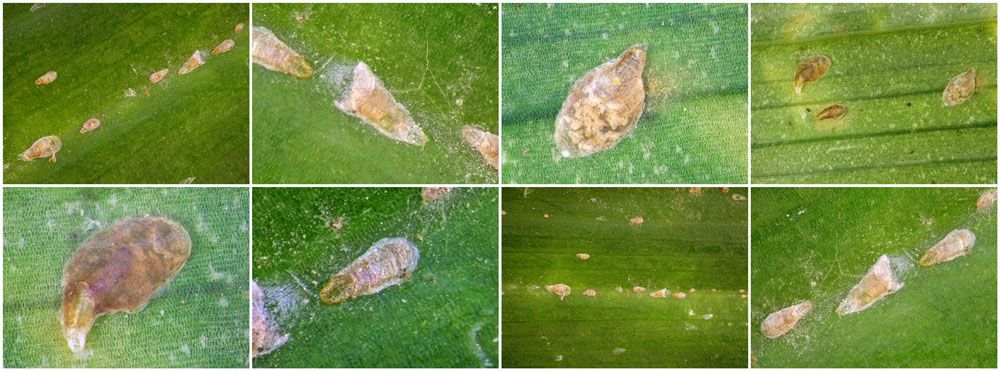
Fern Scale – Pinnaspis aspidistrae
Fern Scale: Appearance, Territory, Damage and Life
Latin name: Pinnaspis aspidistrae
Appearances: A 2 mm long, transparent brown, mussel-shaped scale makes up the female fern scale. The look of male and female fern scales is very different. Their elongated, white scale, which doubles as a cocoon, has three long ridges. Compared to the female scales, the male’s cocoon is significantly smaller. Small winged insects known as male scales emerge from their cocoon in quest of females to mate with. Inside the female’s body, eggs grow. After hatching, the first stage (crawlers) will poke their heads out from beneath the mother’s scale and start looking for a good landing spot nearby. For the rest of their lives, they will stay here. Typically, fern scales are found in groups.
Host plants: Liriope and real ferns (not asparagus ferns) are the major targets of fern scale infestation in North Carolina. In Florida and Hawaii, this pest has been found on a variety of foliage plants, citrus, and other woody ornamental trees and shrubs. Other hosts include a variety of palms and foliage plants, such as mondo, Monstera, Ophiogon, Phoenix roebelenii, dracaena, Ficus, lady palm, Chamaedorea, Chrysalidocarpus, Chamaedorea, Monstera, Ophiogon, and staghorn fern.
Territory: Fern scales can be found on ferns in homes, greenhouses, and outdoors on liriope in the Southeast’s Coastal Plain and Piedmont.
Damage insect caused: Male second stage armor that stands out against the dark green foliage of infected ferns is disfiguring. Ferns used for commercial purposes can occasionally withstand extremely high population densities without much obvious vigor or color loss. On several types of ferns and liriope, female scale feeding results in yellow dots. Males stop eating after the second developmental stage.
Life cycle and habits: The biology of fern scales especially is poorly understood. Under the armor, female scales lay their eggs. After the final egg is deposited, the female passes away. Small crawlers eventually break through the mother’s armor after hatching from the eggs. Before starting to feed, the crawlers walk around before sticking their long, threadlike mouthparts into the leaf and sucking out nourishment. When an insect molts, it transforms into a second stage, which starts to emit a waxy substance from under the cast skin of the first stage (crawler). These insects eventually molt into adulthood. At the back of the second stage armor, female scales start to secrete the adult armor.
